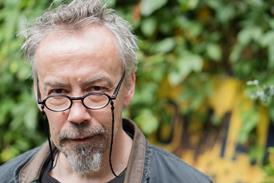Writing policy and helping to shape the context of local development can be as rewarding as designing, writes Cinzia De Vincenziis

As an architect and researcher, I always imagined the path ahead of me wouldn’t be a conventional one. I’m an architect with a PhD in architecture and urban design, titled “Living the Neighbourhood. Living the City. From Social Housing Regeneration to Urban Regeneration”, which focuses on the role that regeneration of council estates could have in the regeneration of a wider context.
Since completing my PhD, I always felt the desire to apply my theoretical and strategic expertise to regeneration projects. Indeed, over the past few years, my passion for housing regeneration and large-scale projects had led me to join an award-winning practice in London, where I contributed to early-stage masterplan and urban design projects. I got to work on strategic mixed-use and industrial-led regeneration schemes, public realm and development briefs, collaborating with local authorities and improving my urban design skills in city making.
After years of pursuing a career where I could influence the decision-making process, I decided to explore the opportunity to join the public sector and contribute to shaping a better city. As much as I love high-quality design and find joy in small-scale projects and bespoke details, I have always had a particular interest in the strategic aspect of design.
I’m interested in understanding the role of the city’s existing urban infrastructure, new developments and how the quality of the urban environment affects people’s lives. How can I influence new ways of living? A feminist city, a sustainable city, an equal opportunity city with more affordable homes and different housing typologies that reflect the needs and culture of our communities. If strategic planning is the place where those design and social aspects could be turned into actions and make a social change, planning is where I want to be.
Coming from an Italian education where architecture, urbanism and planning are part of the same qualification, it felt quite natural for me to step into a more strategic role. I embraced my role as Place Shaping Lead in the Planning Policy Team at the London Borough of Newham with a lot of enthusiasm and as a fantastic opportunity to work side by side with planners and plan-makers to shape the growth and development of the borough while making Newham a fairer place to live, work and thrive for its diverse community. Being a public servant and acknowledging that every decision I take could have a positive long-term legacy and impact on people’s lives brought me significant professional and personal satisfaction.
My first year in the public sector has been a huge learning curve
When I accepted my role, it felt like a good fit for me. I knew I had the right experience and skills to support the planning team in the review of the Local Plan. However, having always worked in the private sector, I didn’t really know what to expect from my day-to-day job.
My first year in the public sector has been a huge learning curve, and my colleagues have provided me with an infinite source of in-depth knowledge about planning to learn from. While in my role, I have provided urban design skills and knowledge, reviewing and enhancing design policies and design principles of site allocations and other thematic areas of the plan. I also had to learn very quickly about the governance of the organisation and the plan-making process as well as getting to know the borough and its opportunities.
During my placement, my work has primarily focused on reviewing the draft Local Plan and responding to feedback from different stakeholders received from public consultations. I have also undertaken small sites and site allocation capacity studies and reviewed the Newham Characterisation Study and Small Site Intensification Guidance evidence-base documents.
I lead on the Tall Building Policy, reviewing the location and nature of tall buildings and producing a Tall Building evidence-base document which has recently been published alongside the Regulation 19 Local Plan to supplement the Newham Characterisation Study.
It is very fulfilling to be part of a community that is gradually building trust in the positive changes that collaboration between planners and architects could bring to the built environment
By leading the Tall Building Policy, I had the opportunity to apply my methodical approach and my interest in strategic processes by reviewing and solving key issues around tall buildings and their impact on open space and heritage. Through this process, I have discovered a genuine aptitude for policy-making and not completely to my surprise, I found that I enjoy writing policies as much as I enjoy drawing.
Looking at my journey, I recognise many signs that would have led me to this step in my career, but I’m happy to have made this transition through the Public Practice Associate Programme. Being part of the programme and connecting with like-minded people meant having the right guidance and support to navigate the public sector system, as well as having moments to pause and collectively reflect on the challenges and achievements.
It is very fulfilling to be part of a community that is gradually building trust in the positive changes that collaboration between planners and architects could bring to the built environment. I am also proud to be part of a forward-thinking Local Authority that prioritises the needs of its diverse community in every strategic decision and recognises that collaboration and engagement are the key to long-term success in place-making.
Working for Newham and sitting on the other side of the table gave me the opportunity to bring a different perspective to the plan making process, encourage new policy discussions and provide design guidance to better support a design-led development plan.
After more than a year at Newham, I’m excited to continue my journey in the Place Shaping Lead role. I’m looking forward to completing the Local Plan review until adoption and continuing to foster collaboration between design and policy making through future policy projects.
Postscript
Cinzia De Vincenziis is Place Shaping Lead at Newham Council and a Public Practice associate.
For more information about building a career in the public sector, visit Public Practice’s website.
















No comments yet